Tuesday, December 3rd, 2019.
In this Daily: How Animals Survive Dry Season
Almost all ecosystems exhibit some seasonality. In temperate regions, these changes can be seen in the changes from winter, spring, summer and fall, which can be drastic closer to the poles. In more tropical regions, the most prominent change is usually from wet to dry seasons.
Within these ecosystems, animals have a number of different techniques that help them survive and thrive in changing conditions. In more temperate and polar regions, these adaptations can range from drastic behavioral changes like hibernation to physical changes like summer and winter coats, and even include widespread migration.
Animals that deal with wet and dry seasons, like those in Guanacaste, Costa Rica, respond to the onset of dry season in one of five major ways: increased mobility, territory restriction, water sequestration, baseline survivability, and migration.
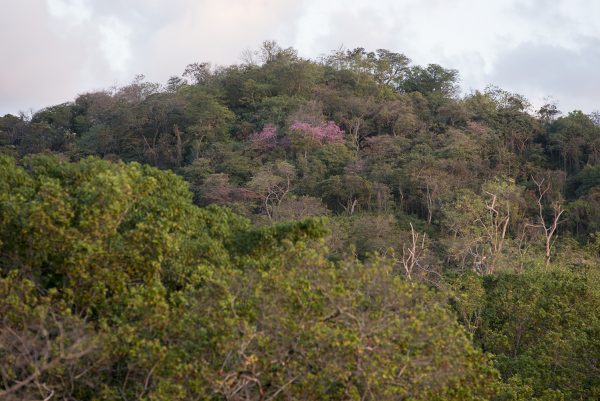 Animals throughout Guanacaste adapt to the onset of the dry season in different ways
Animals throughout Guanacaste adapt to the onset of the dry season in different ways
How Animals Survive Dry Season
In tropical regions with dry seasons, vegetation becomes less available, and water sources restrict. For example, in Guanacaste animals become increasingly dependent on certain watering holes. This leads to one of a few responses in animal behavior:
Migration
One of the simplest methods to avoid the dry season is to simply go where there are more resources. This tends to be more common for birds and other creatures capable of flight, but there are some notable examples of terrestrial migrations. For example, in Africa there is an event called “The Great Migration” where millions of zebras, wildebeest, gazelle, and other grazing animals migrate across the Serengeti to lands where there is more vegetation.
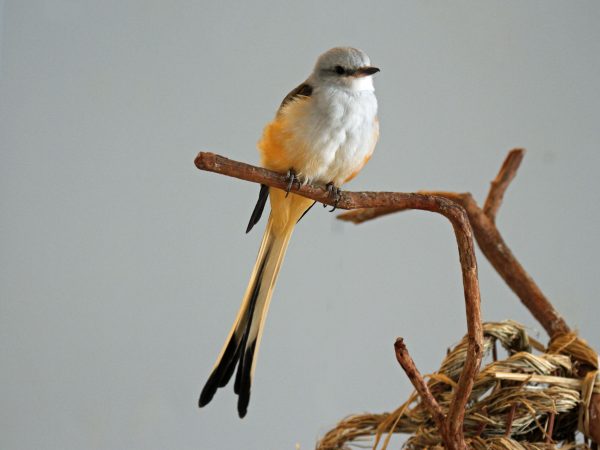 The scissor-tailed flycatcher, is one of the birds that actually migrates to Guanacaste during the dry season | PC: Commons
The scissor-tailed flycatcher, is one of the birds that actually migrates to Guanacaste during the dry season | PC: Commons
In Guanacaste, this method of surviving the dry season is used sparsely, by individuals rather than in mass migrations. In fact, Guanacaste actually sees an uptick of birds this time of year. Swallows, scissor-tailed flycatchers, herons, and tanagers, which can thrive in the drier climates, migrate to the area to avoid the cold weather in the north. There are also regional migrations of parakeets, which stay within Costa Rica and are not very dependent on large water sources.
Increased Mobility
As water resources dwindle into small watering holes, one way that animals can adapt is through increased mobility. Covering a wider range of territory than usual provides access to more feeding grounds and watering holes, which can help accommodate the lower availability of water and food.
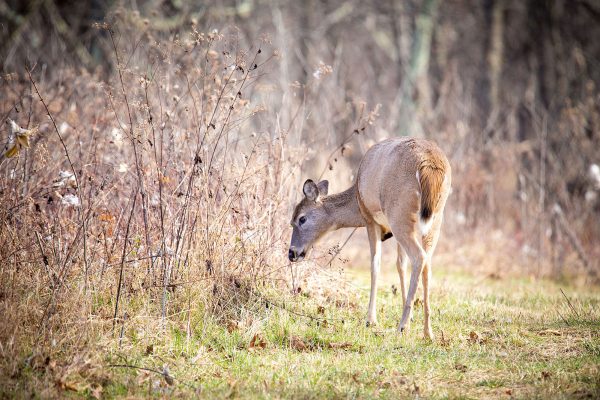 A white-tailed deer browsing in dry season. Less available foliage encourages a wider range | PC: Commons
A white-tailed deer browsing in dry season. Less available foliage encourages a wider range | PC: Commons
This is crucial for both second order herbivores and predators. For example, a white tailed deer must continue moving to find new browsing grounds and watering holes. On the other hand, predators like a tayra or a puma (seen in the video below) must increase their rotation area to include multiple of these sometimes-distant watering holes.
Territory Restriction
With water and food only available in certain areas, some animals choose to restrict their territories and remain close to easily available nourishment. This increases efficiency of foraging and reduces energy expenditure, but can hold some risk for smaller animals, as the higher density of available prey draws predators to the same areas.
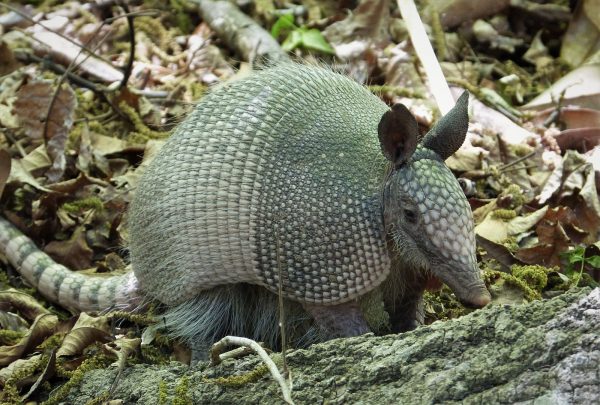 During the dry season, protective measures like the nine-banded armadillo's tough shell allow smaller mammals to survive in denser areas around watering holes | PC: Commons
During the dry season, protective measures like the nine-banded armadillo's tough shell allow smaller mammals to survive in denser areas around watering holes | PC: Commons
Some of the most common animals in Guanacaste that follow this behavior also have some natural defenses from predators, like armadillos and skunks, which can be tested during the dry season. Other small animals, like coatis, often travel in large groups.
Water Sequestration
Similar to hibernation for a bear, some animals stockpile water during the greener months, so that they have it in reserve for the future months. Desert tortoises and camels are two common examples of creatures that can often go for months without a drink of water, and survive through cleverly storing water and nutrients while it is available.
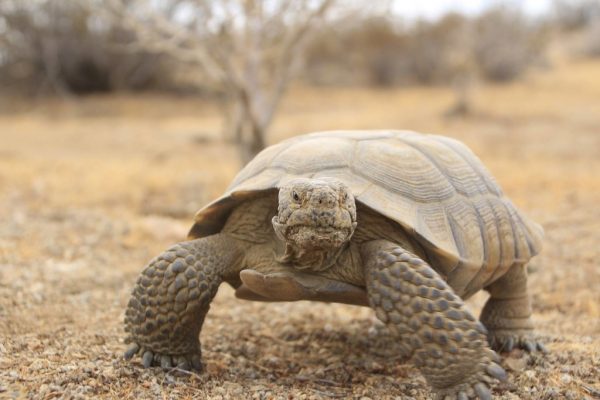 The desert tortoise sequesters water when it is available, allowing it to survive for long periods of time without a drink | PC: Commons
The desert tortoise sequesters water when it is available, allowing it to survive for long periods of time without a drink | PC: Commons
This is a more rare behavior in Guanacaste, where the dry season never quite reaches the depths of a place like Africa. For example, the painted wood turtle (seen in the compilation below) has the ability to stockpile enough water to survive for months at a time during periods of hibernation. However, even in the driest, warmest months, there is still enough water to find for these small creatures, so these turtles rarely if ever feel the need to actually stockpile water and hibernate.
Baseline Survivability
The last method of surviving the dry season is relatively simple. Certain animals maintain a baseline requirement of water and nutrients that is well below what is available throughout the dry season, meaning that no matter the time of year, they can easily survive.
This is common in many insects like julia and cloudless sulphur butterflies, small rodents like variegated squirrels and bats, house geckos, and almost any animal smaller, where baseline nutrition is so low that the animal is rarely in much danger of thirst or starvation. However, there are also some larger animals, mainly reptiles like black iguanas, that can survive on these low baselines.
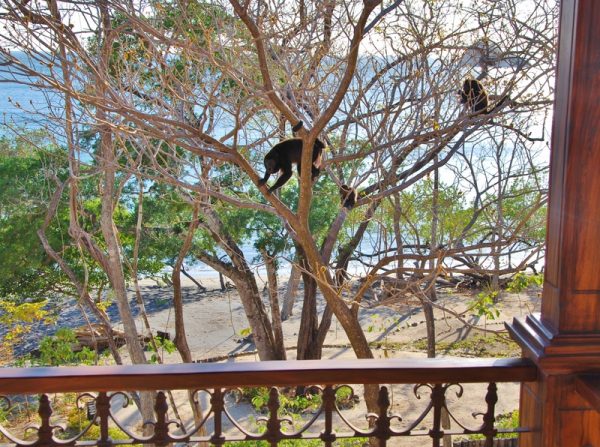 Despite its size, the howler monkey can survive with minimal food and water, which is part of the reason why they are so widespread in Costa Rica
Despite its size, the howler monkey can survive with minimal food and water, which is part of the reason why they are so widespread in Costa Rica
In Guanacaste, the most iconic example of a creature that survives happily during rainy season or dry season is the howler monkey, which despite its size is renowned for its adaptability to small and low nutrient environments, and changes its behavior very little throughout the year.
See Animals in the Dry Season
The arrival of the dry season brings reduced foliage, congregations of animals around watering holes, and increased mobility of larger wildlife, making the summer months in Guanacaste a good time to set out to see some of these Costa Rican animals in the wild.
[maxbutton id="1" url="https://cta-redirect.hubspot.com/cta/redirect/4917861/bb90976c-fd33-457a-a285-892e384bad66" text="Visit during the dry season" ]